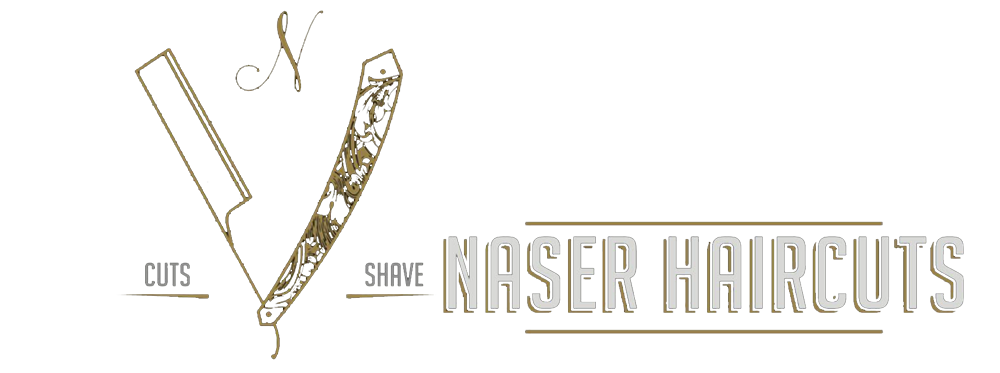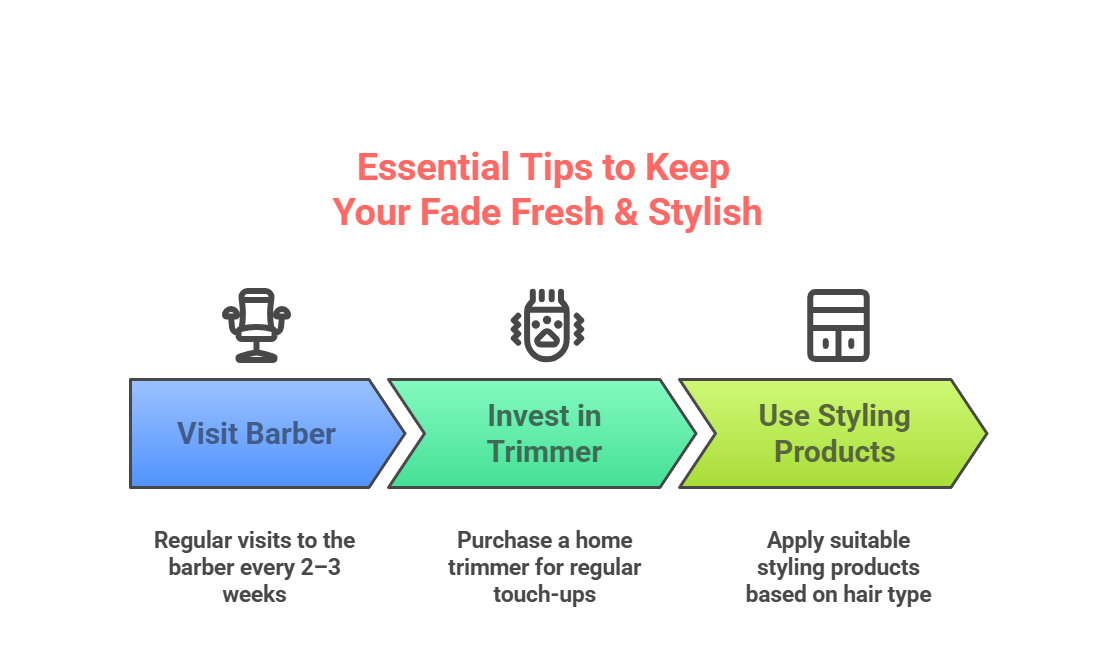Zero Fade Vs Skin Fade: Ultimate Guide to Modern Men’s Haircuts
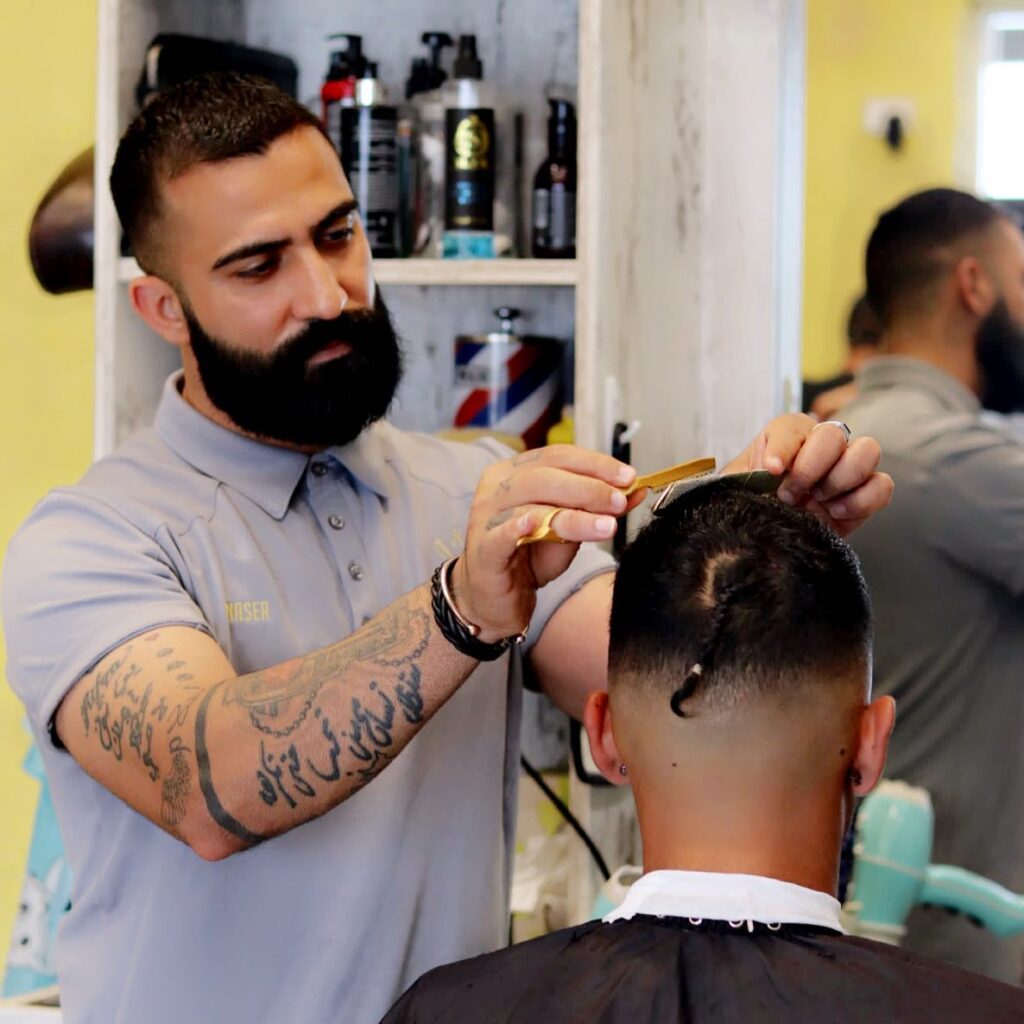
You’re sitting in the barber’s chair. Scrolling through Instagram for hairstyle inspiration. And you stumble on two terms that keep popping up. Zero Fade and Skin Fade. They look similar. But your gut tells you they’re not. Before you know it, you’re down a Google rabbit hole. Bombarded with terms like low skin fade and fade vs taper fade. Confusion sets in. What’s the difference? Which one suits your vibe?
If you’ve ever left the barber’s chair feeling like your fade wasn’t quite what you asked for. This guide is your lifeline. As Perth’s trusted men grooming experts at Naser Haircuts, we’re here to clear up the confusion once and for all. Let’s understand the Zero Fade vs Skin Fade and help you choose the perfect look.
What Is A Fade Haircut?
Before we compare the two styles, let’s establish what a fade actually is.
A fade haircut is a technique where hair gradually transitions from long to very short (or shaved) around the sides and back. Think of it like a gradient: the top stays longer for style, while the sides “fade” into shorter lengths. The “fading” effect creates a clean, blended look. Rather than a stark line between different lengths. Professional barbers achieve this using clippers with various guard sizes. Skillfully blending between them.
1. Skin Fade (Bald Fade)
The hair is shaved down to the bare skin at the bottom.
You’ll see the scalp, creating a bold contrast.
A skin fade, also known as a bald fade, is perhaps the most dramatic fade style. This technique involves shaving the hair down to the skin at its lowest point. Creating a striking contrast with the longer hair above.
The key characteristic of a mens skin fade is that it literally goes down to the skin. There’s no guard on the clipper at the lowest point of the fade. This creates an extremely clean look that transition from bare skin to hair.
Skin fade haircut is perfect for those who want a bold style. They’re particularly popular in summer months when a cooler cut is desirable.
2. Zero Fade
The shortest part is trimmed to 0.5mm (like a shadow).
Leaving a faint layer of hair. No scalp shows.
A zero fade is similar to a skin fade but with a subtle fading short hair. Instead of taking the hair all the way down to the skin. A zero fade uses the clipper’s zero guard (hence the name). Which leaves approximately 0.5mm of hair at its shortest point. This creates a similar high-contrast look to a skin fade. But with a slightly softer appearance since there’s still a trace of hair visible.
Zero fades are ideal for people who want the modern look of a skin fade. But prefer not to expose the scalp entirely. The minimal hair left creates a “shadowed” effect. Rather than a completely bald look.
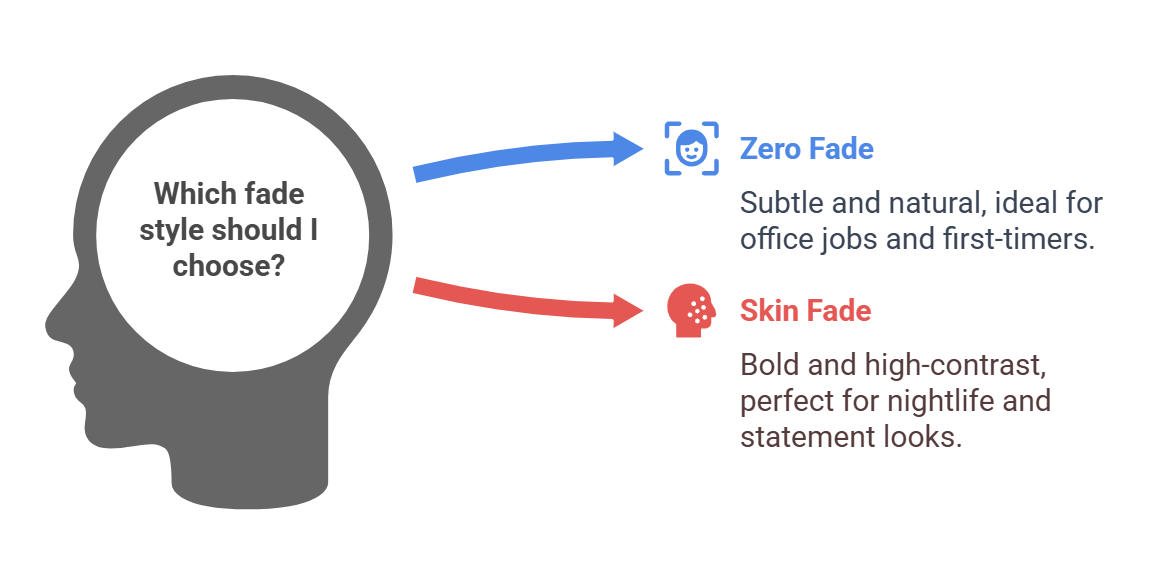
Zero Fade Vs Skin Fade: What’s the Difference?
Let’s break down the differences with a side-by-side comparison. Screenshot this table for your next barber visit:
Feature | Zero Fade | Skin Fade |
Base Length | 0.5mm (clipper-cut, no skin) | Fully shaved to the skin |
Contrast Level | Subtle, natural shadow | Bold, high-contrast |
Maintenance | Every 3–4 weeks | Every 2–3 weeks (touch-ups needed) |
Best For | Office jobs, first-timers, beards | Nightlife, thick hair, statement looks |
Styling Products | Light pomade or texture spray | Strong hold gel or wax |
Face Shape Match | Round, oval | Square, angular |
The 5 Major Fade Types
Fades can be categorized by where they begin on the head.
1. Low Fade
Starts near the ears (subtle)
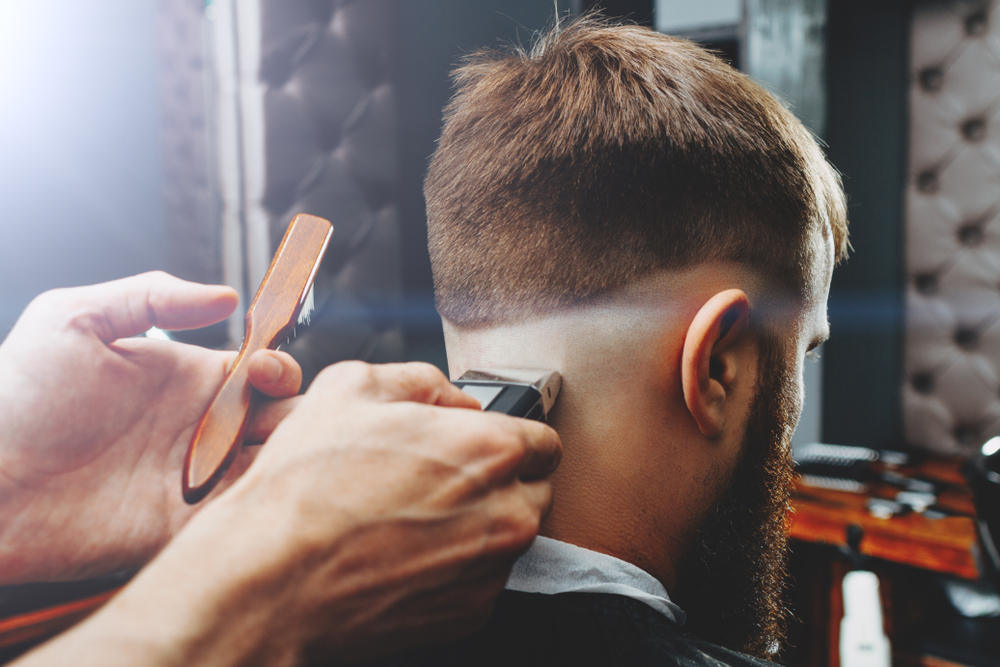
Low skin fade starts just above the ears and neckline, around the temples. This offers a subtle, professional look that works well in conservative environments. The low fade is the most maintenance-friendly option, as it grows out more gracefully than higher fades.
2. Mid Fade
Begins at temples (balanced)
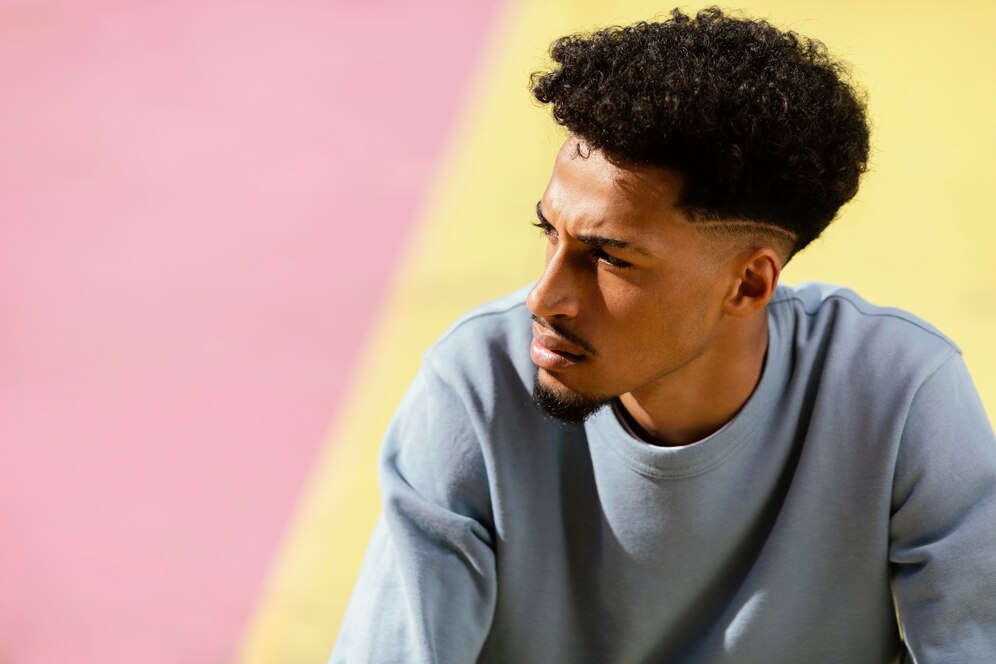
Begins halfway up the sides of the head, roughly at the temples. This creates a balance between subtle and dramatic. Mid fades are versatile enough for both professional settings and more casual environments, making them one of the most popular choices.
3. High Fade
Starts near the crown (dramatic)
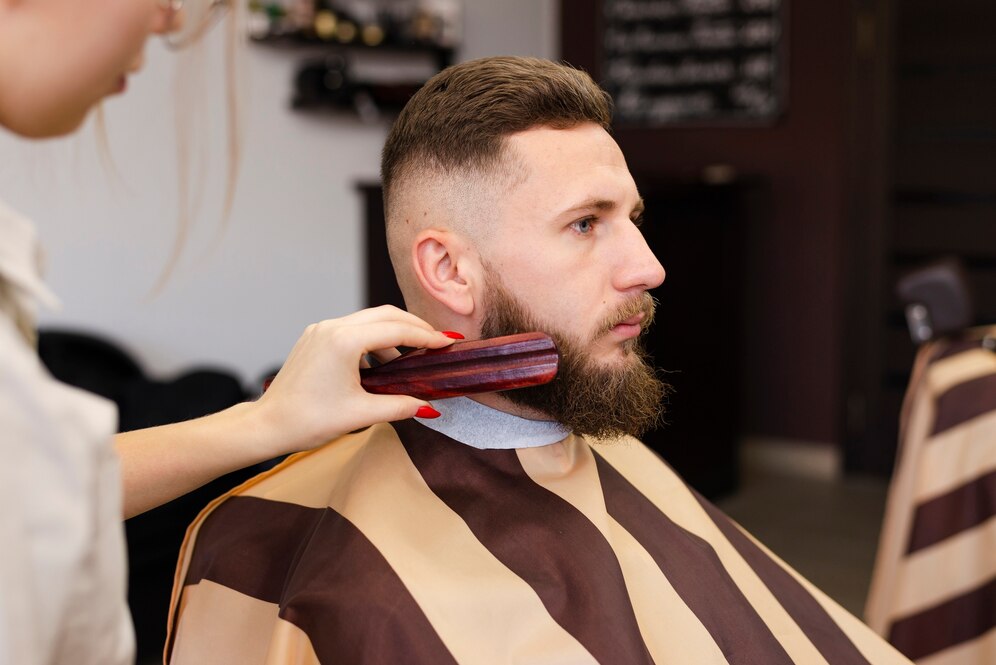
Starts near the top of the sides, sometimes as high as the crown. This creates a bold, high-contrast look that definitely makes a statement. High fades emphasize the top of the haircut and create a striking silhouette that draws attention.
4. Taper Fade
Softer transition (gentleman’s choice)
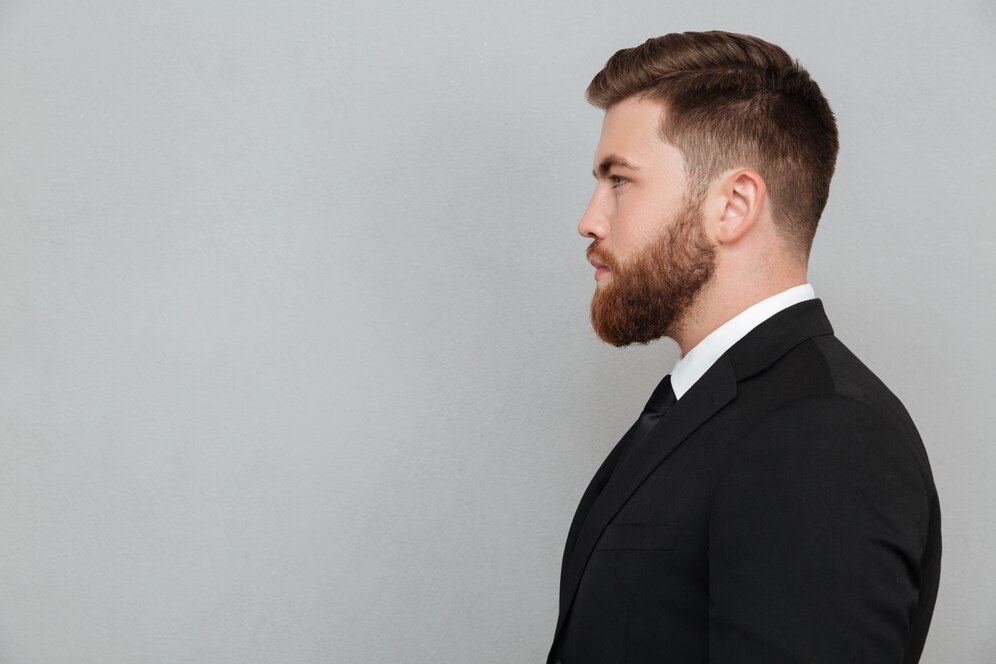
A taper fade features a gradual, subtle transition from longer hair at the top to shorter lengths near the nape and ears. Starting just below the natural hairline, this style maintains a clean, polished appearance without harsh contrasts. Ideal for professional settings or classic looks, it’s low-maintenance and grows out naturally, blending seamlessly with styles like side parts or slicked-back hair.
5. Drop Fade
Curves around the ear (edgy)

This edgy variation curves downward behind the ears, following the natural hairline to create a dramatic “drop” effect. The fade starts higher on the sides but dips sharply near the ear, emphasizing texture and structure for a bold, modern vibe. Perfect for casual or creative environments, it pairs well with shorter or textured tops (e.g., crops or buzz cuts) to highlight the unique shape. The drop fade adds visual interest while maintaining a sharp edge.
Which Fade Suits You? High, Mid, or Low?
1. Round Face
High skin fade + angular top (adds height)
Higher fades like the high fade or high and tight add visual height and create the illusion of a longer face. Pair with volume on top to further elongate the face.
2. Square Face
Mid zero fade + textured crop (softens jawline)
Mid fades complement strong jawlines while maintaining balance. These face shapes can pull off almost any fade height due to their natural angles.
3. Oval Face
Any fade works
Almost any fade works well, but the classic mid fade is particularly flattering. Oval faces have the versatility to experiment with various styles like tight and high haircut styles.
4. Long Face
Low fade + side-swept fringe (balances length)
Low fades work better as they don’t add additional height. Mid-length styles on top that add some width can help balance facial proportions.
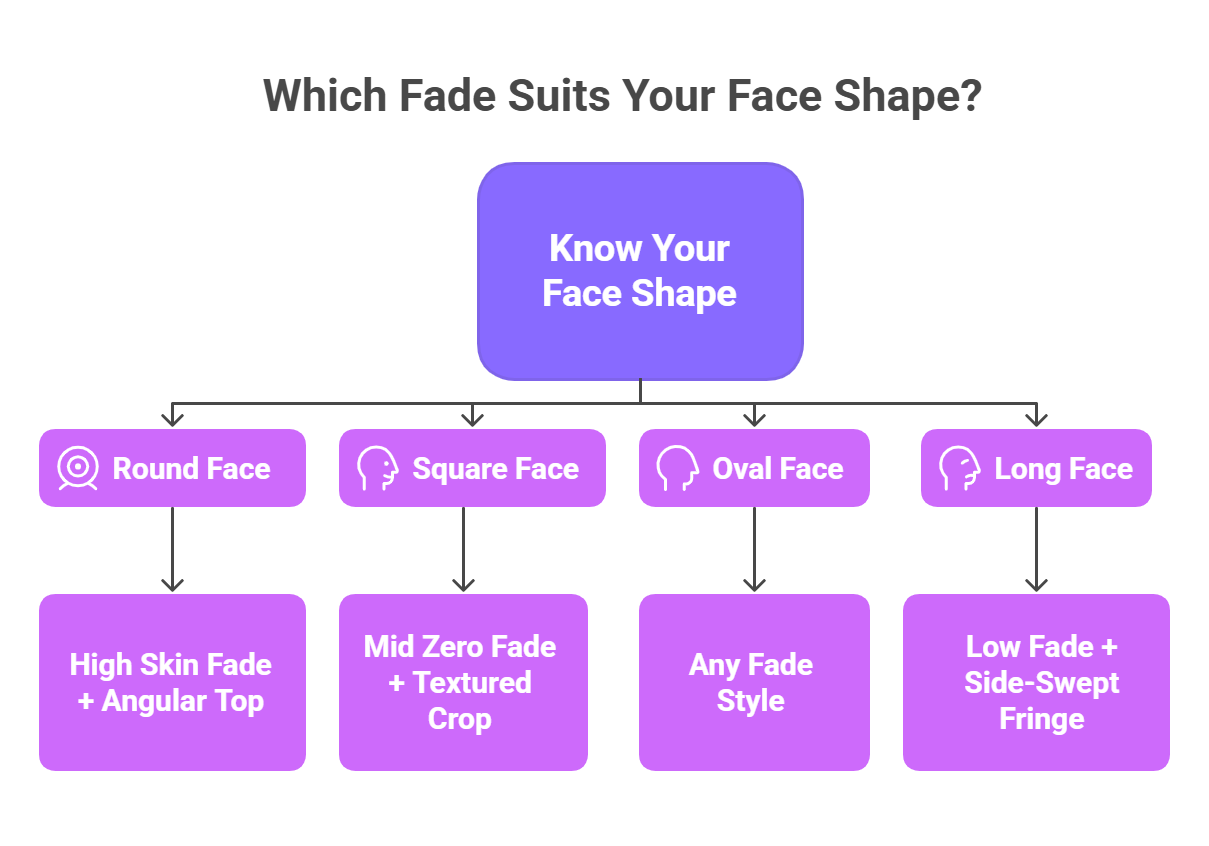
Communicating With Your Barber
Getting exactly the fade you want requires clear communication with your barber. Here’s how to get successful results.
- Use specific terminology: Terms like “low fade,” “mid fade,” “high fade,” “skin fade,” or “zero fade” have specific meanings to barbers.
- Specify guard numbers: If you know you prefer a #1 guard at the bottom fading to a #3, communicate this clearly.
- Bring visual references: Photos eliminate confusion and ensure you and your barber are on the same page.
- Discuss the top style separately: The fade is just one component of your haircut. Be specific about how you want the top styled as well.
- Ask about maintenance: Have your barber explain how to style and maintain your specific cut between visits.
- Be open to suggestions: Experienced barbers know which styles work best with different hair types and face shapes, so consider their recommendations.
Ready for Your Perfect Fade?
Naser Haircuts is Perth’s premier destination for men’s grooming and specializes in all varieties of mens skin fade styles and modern barbering techniques. Visit us at or call us at 0402 210 969 to book your appointment today.
Whether you’re leaning toward a subtle zero fade or a dramatic skin fade, our team at Naser Haircuts is ready to deliver the perfect cut for you. Stop wondering about the difference and experience it firsthand.
Fade Haircut FAQs
Let’s tackle the most Googled questions about Zero Fade vs Skin Fade.
1. Is a fade the same as an undercut?
Nope! Undercuts have a hard line, while fades gradually blend.
2. Can I get a fade with curly hair?
Absolutely! Skin Fades add sharpness, while Zero Fades enhance natural texture.
3. What’s a low fade skin fade?
A low skin fade starts the shave just above the ear—subtle but still sharp.
4. How do I maintain my fade at home?
Invest in clippers and watch YouTube tutorials. Or leave it to the pros at Naser Haircuts.
5. Will a fade suit my face shape?
Zero Fade softens angular jaws. Skin Fade highlights cheekbones.
6. What’s the difference between fading short hair vs long hair?
Short hair fades (like buzz cuts) focus on precision. Long hair fades (e.g., quiffs) emphasise volume.
7. Can I combine a fade with a tight and high haircut?
Yes! Go for high skin fades with pompadours or slicked-back styles.
8. How do I explain a skin to fade look to my barber?
Say, shave it to the skin at the bottom, then blend up to a #2 guard.
